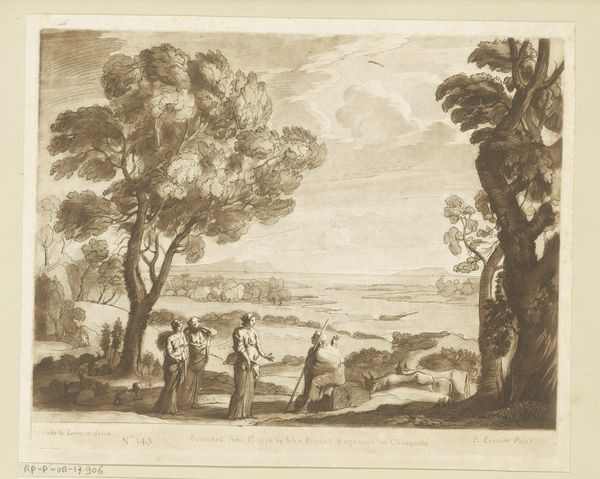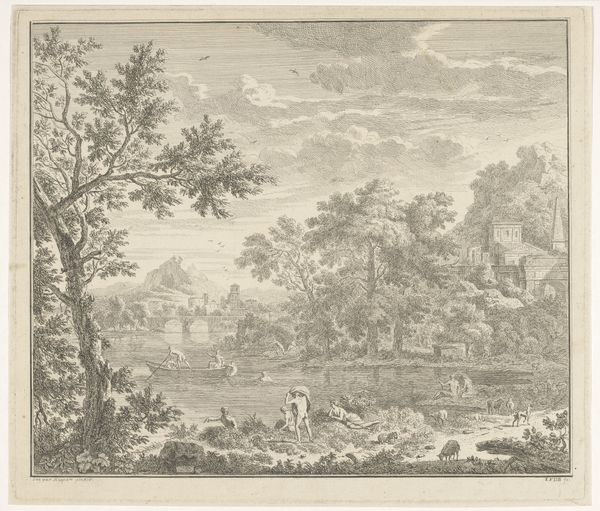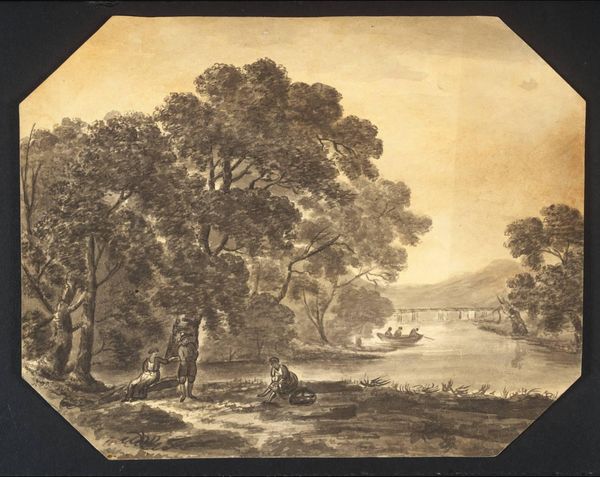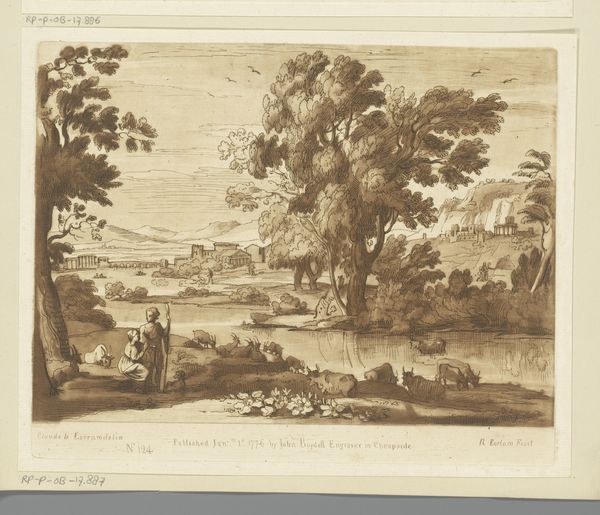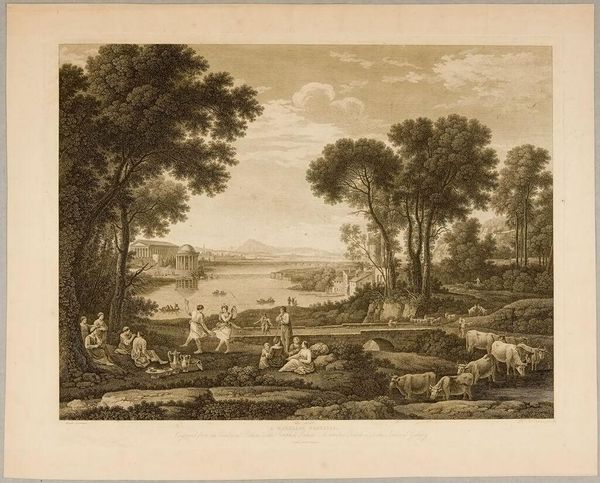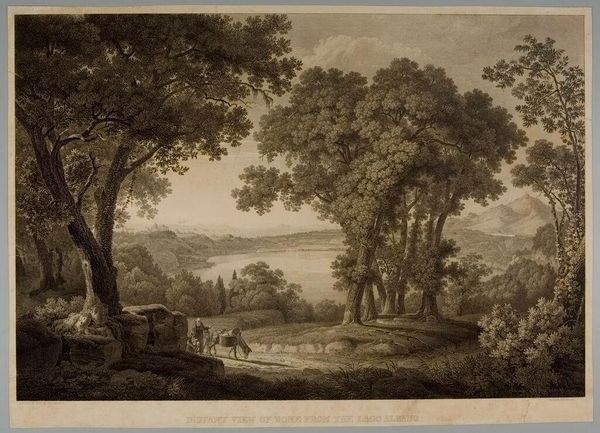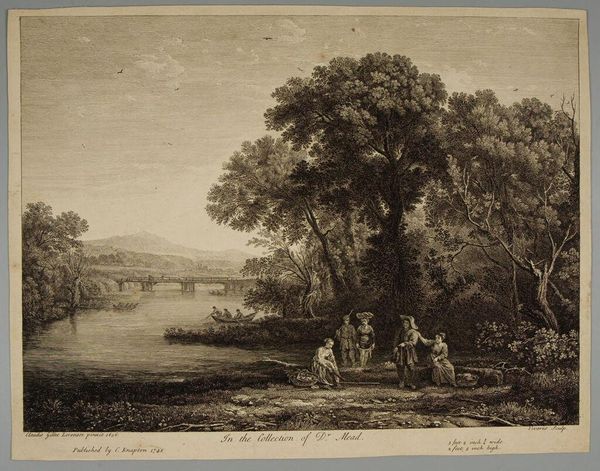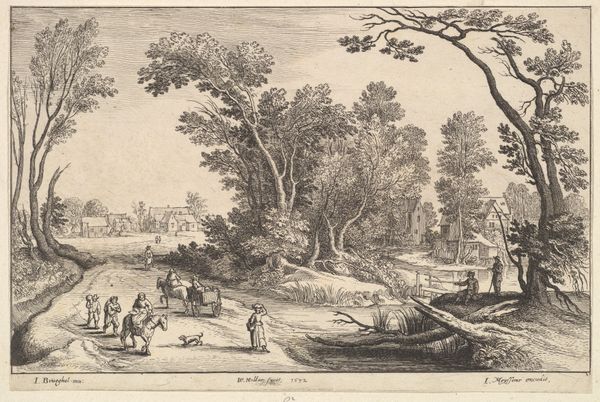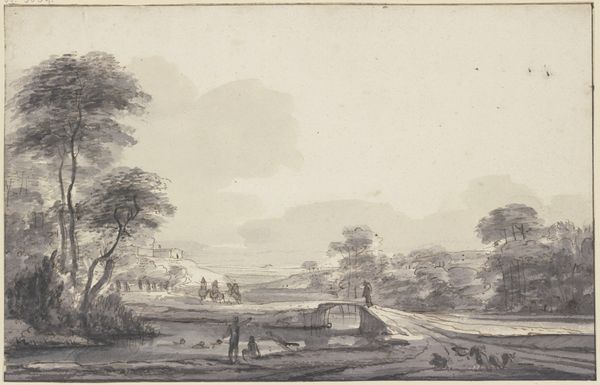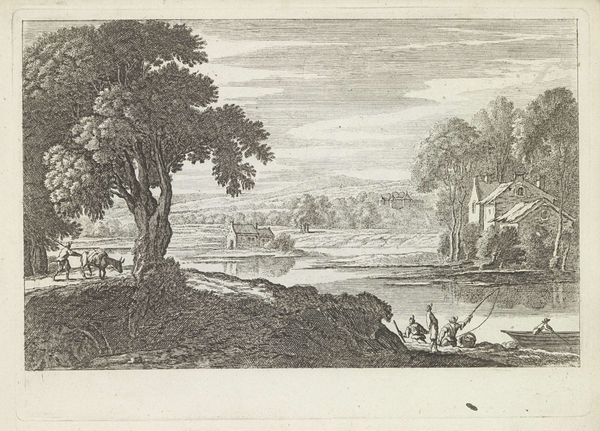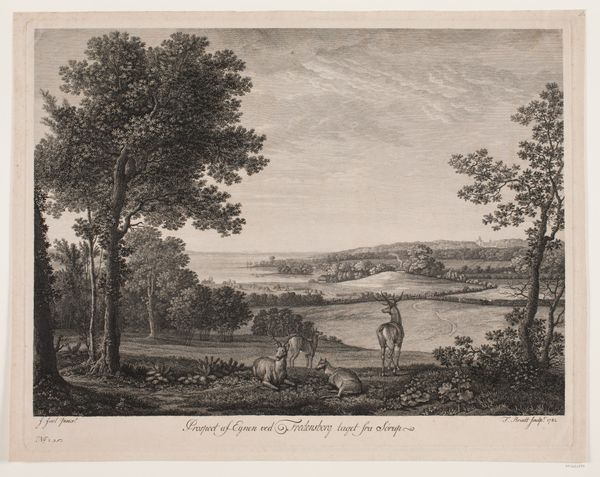
Dimensions: support: 300 x 485 mm
Copyright: CC-BY-NC-ND 4.0 DEED, Photo: Tate
Curator: I’m struck by the etching’s light touch; it seems so effortless in its depiction of rural life. Editor: Indeed. Here we see Jean-Baptiste-Claude Chatelain’s "A View of the Wrekin Hill from Ercall, Shropshire," currently held at the Tate. The dimensions of the support are 300 by 485 mm, demonstrating that it's a relatively small piece. Curator: The figures seem absorbed in their labor, but there's also a sense of leisured observation—especially with the small groupings. I wonder about the lives represented, and who is depicted. Editor: Absolutely. Consider how Chatelain, as a visiting artist, might have perceived and depicted the laboring classes and the gentry, perhaps reinforcing existing social hierarchies through his artistic choices. The very act of creating and consuming such images would be tied to the ownership and cultivation of land. Curator: It also makes me consider the process of etching itself, the labor involved in creating the plates, and the accessibility of the finished prints as commodities. Editor: Ultimately, Chatelain's image invites us to reflect on the complex interplay between land, labor, and representation in 18th-century England. Curator: And how images like this both reflected and shaped perceptions of rural life.
Comments
tate 8 months ago
⋮
http://www.tate.org.uk/art/artworks/chatelain-a-view-of-the-wrekin-hill-from-ercall-shropshire-t08125
Join the conversation
Join millions of artists and users on Artera today and experience the ultimate creative platform.
tate 8 months ago
⋮
Chatelain was born in Paris or, more likely, in London of French Huguenot parents. He is chiefly remembered as one of the earliest landscape engravers in England, but he was also a talented landscape draughtsman and a drawing master of some repute. He died around 1758 after overindulging in lobsters and asparagus.Chatelain produced both imaginary landscapes and topographical drawings - that is to say, views of actual places. The Oppé collection includes several of his ideal landscapes and a few of his rarer topographical drawings, this example somewhat unusual in being coloured. The subject was engraved in 1748. Gallery label, September 2004

